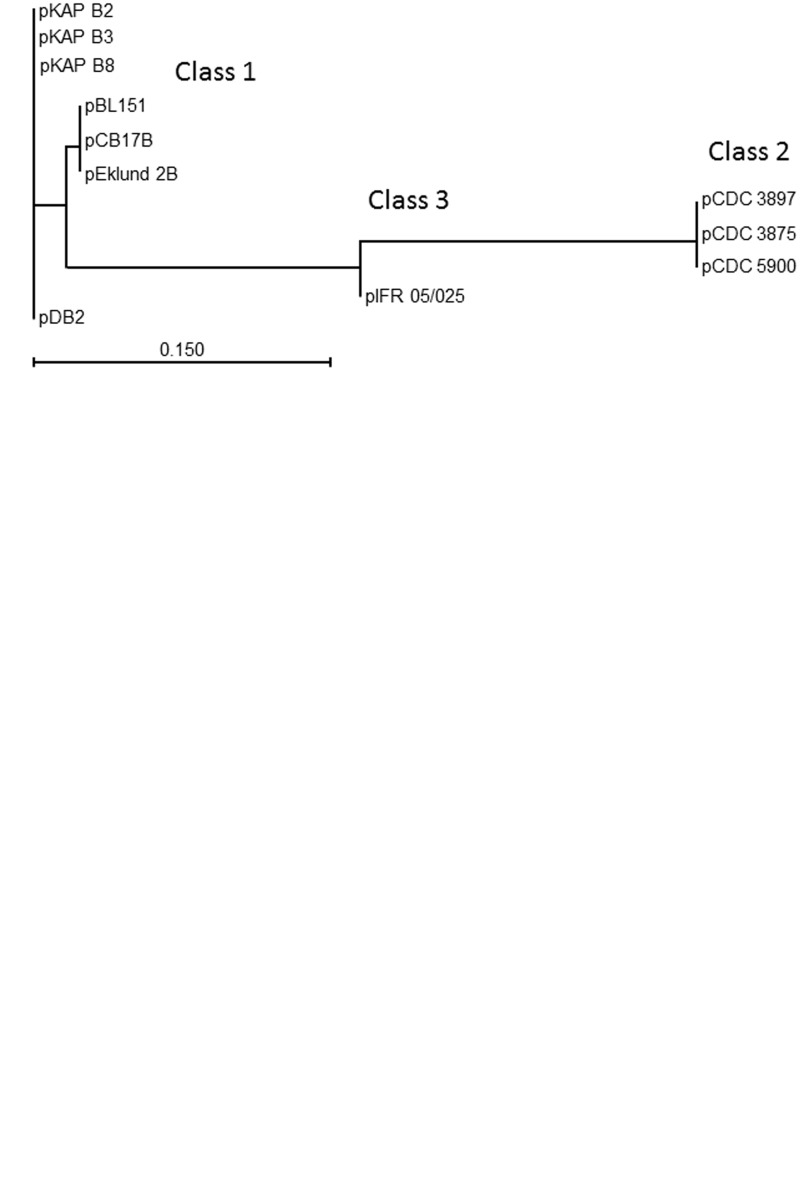Fig. 3.—
(A) Unrooted neighbour-joining (Jukes–Cantor) tree showing the three main plasmid classes found in Group II Clostridium botulinum type B4. Plasmid pIFR 05/025 shares approximately 71% identity with the Eklund 17B class and 67% identity with the pCDC 3875 class. The differences between members of classes 2 and 3 due to insertions/deletions, apparent in figure 2 are too small to be seen on this scale. The scale bar indicates branch length. Plasmids pKAP B2, pKAP B3, and pKAP B8 are 48,298 bp and are identical; pDB2 is 48,290 bp and shares 99.9% identity with the pKAP B series. Plasmids pBL151 and pEklund 2B are 46,642 bp and identical; pCB17B is 47,689 bp and differs from these by 3.7%. Plasmids pCDC 3897 and pCDC 3875 are 58,175 bp and identical; pCDC 5900 is 62,986 bp and differs from the other plasmids of class 2 by 7.6%. (B) Unrooted neighbour-joining (Jukes–Cantor) neurotoxin gene cluster tree. The entire neurotoxin gene cluster was included in the alignment, ranging from the 3′-end of the ha70 gene to the 3′-end of the boNT/B4 gene (11675 bp in each case). Number of SNPs defining each branch length is indicated. Note that IFR 05/025 now clusters with the CDC 3875 class. Plasmid class for each neurotoxin gene cluster is in parentheses. The scale bar indicates branch length. (C) Unrooted neighbour-joining (Jukes–Cantor) type B4 neurotoxin gene tree. DNA sequences not determined in this study were obtained from GenBank (NCBI). Number of SNPs defining each branch length is indicated. The sequence with accession number X71343 was published as being that of Eklund 17B (Hutson et al. 1994); however, it differs from the two other published versions (which are identical) by 21 bases. Attempts to locate the organism used in this study were unsuccessful. The scale bar indicates branch length. SNPs, single nucleotide polymorphisms.

